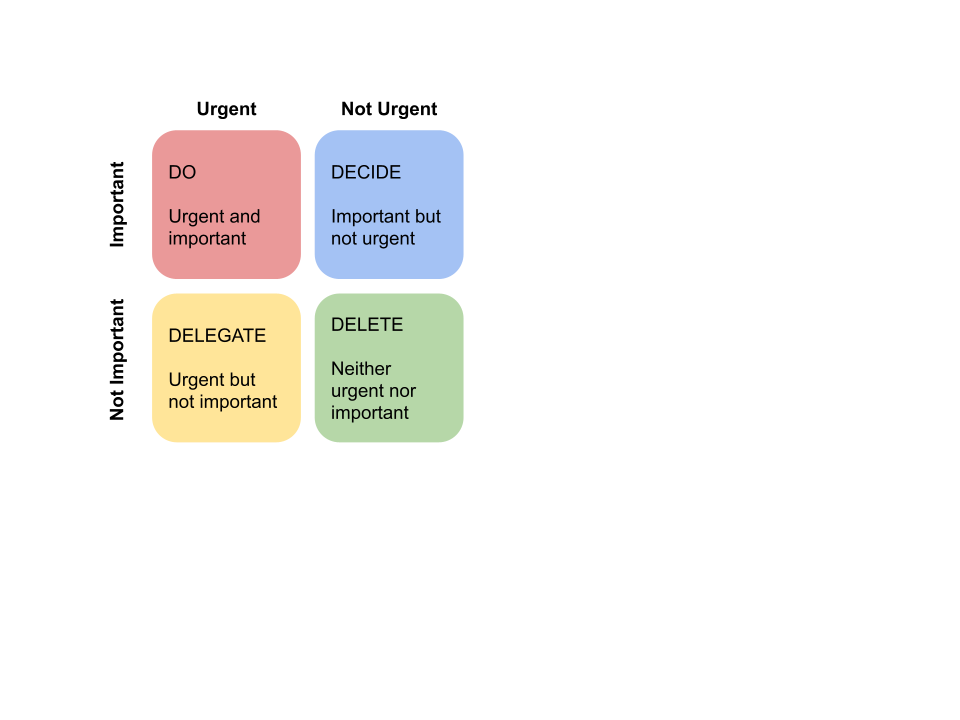Study Techniques
Pareto Analysis
This technique is also known as the 80/20 rule and based off the idea that "20% of your actions are responsible for 80% of outcomes"
- Identify and list concepts/problems
- Identify the main idea of each concept/problem
- Score each one
- Put them in groups that make sense to you
- Add up scores for each group
- Now start working on the highest scoring group!
Good for problem solvers and analytical thinkers
Pomodoro Technique
This technique is one of the best and most well known studying methods as it makes you feel productive
- Choose a task you need to get done
- Set a timer for 25 minutes and work on the task for that time
- Take a 5 minute break when the time is up
- Repeat this 2-5 times
Good for creative thinkers and those who are burnt out
Eisenhower Matrix
Organize your tasks into the boxes below.

Good for people in leadership positions and critical thinkers
Parkinson's Law
This technique is more a law than a method.
- Forget the computer charger
- Set an earlier due time
- Set a deadline
- Limit your time for each task
Good for procrastinators and people who work well under stress
Time blocking method
Assign each task to a time block in your schedule. The more detailed the better it could be. For example, eat breakfast, take a shower, study for chem test.
- Use a calendar or piece of paper, we recommend google calendar or notion
- Add the tasks that are already scheduled to the calendar
- Then write down the tasks that aren't scheduled be you need to do
- Then estimate how long it will take for each task
- Add the tasks to your calendar based on time
Good for students or parents and analytical thinkers
Getting things down method
Write down tasks and then break them down into tasks that are more managable and realistic.
- Write down all tasks you want to accomplish
- Determine if you will be able to complete the tasks
- Put your tasks in order of when it needs to be done by
- Look through your list one last time
- Do them!
Good for those who struggle to focus or those who are overwhelmed in their daily lives
The SQ3R method
Helps students identify facts and retain information in their textbook.
- Skim the chapter and take notes on headers, subheaders, images, charts, etc.
- Write down questions about the chapter's content
- Read the chapter to answer your questions you just made
- Then summarize the chapter and identify major points
- Add the tasks to your calendar based on time
Good for students or parents and analytical thinkers
Retrieval Practice
Practice of retrieving learned things.
- Utilize practice tests
- Make your own questions
- Use flashcards
Good for remembering a lot of information, mainly textbooks and facts